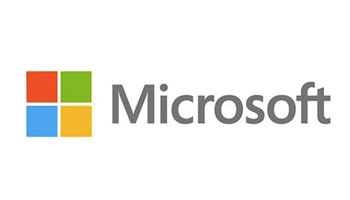 New rumours suggest that Microsoft’s upcoming Windows 9 release will adapt its user interface to suit the type of hardware it’s running on.
New rumours suggest that Microsoft’s upcoming Windows 9 release will adapt its user interface to suit the type of hardware it’s running on.
The claims come from ZDNet’s Mary Jo Foley, who has a proven track record in reporting information gleaned from Microsoft insiders.
Based on her sources she reports that users running Windows 9 on a keyboard-centric device (read: laptop, desktop PC) can expect a traditional desktop experience replete with a new(ly reintroduced) Start Menu containing “live tiles”.
Users of convertible notebooks, like the Lenovo YogaPad, will have a choice of Modern and Windowed mode, “…based on whether or not keyboards are connected or disconnected.”
But the change is said to go even further than simply showing an appropriate desktop paradigm. ‘Modern UI’ applications, which currently run fullscreen in Windows 8, will instead open as windowed desktop apps for laptop and desktop users (though an option to switch to the old environment will also be present, Foley reports).
Currently all Windows 8 and Windows RT users see the same interface, regardless of hardware capabilities.
Similar to Unity’s Converged Approach
If all this talk of intelligently suiting the form factor sounds familiar — it should.
If all this talk of intelligently adapting the experience to suit hardware sounds a touch familiar, it should. Canonical’s next generation mobile OS effort, Unity 8, also aims to present a different “face” (UI) and feature set based on screen size and hardware capabilities of a device.
It’s this feature that, for example, will allow a phone to morph into a PC when connected to a monitor, with the “face” changing to that of a more traditional desktop rather than merely enlarging the mobile home screen. It’s this promising feature that has many users excited (though it should be noted is still some way off being implemented, and certainly won’t be available to those buying the first Ubuntu Phone handsets due later this year).
Imitation is the sincerest form of flattery, so should Ubuntu feel suitably proud of inspiring its competitors? Not really.
Canonical is not the first company to chase convergence, nor is its dream of having one shared and unified codebase across all devices a goal exclusive to them. Windows 8 and Windows Phone already feature a degree of UI and UX convergence, a convergence effort that predates Canonical’s Unity 8.
Microsoft’s goal was to have one OS running on all devices — just like Canonical with Ubuntu. But poor reception to Windows 8 and slow uptake of the ARM-based Windows RT means the company is changing tack. Its RT and Windows Phone offerings will merge into a single product, with tablet and mobile interfaces being triggered depending on the device.
Similarly, just like Canonical’s device agnostic “Click App” packages, the Redmond-based company is actively promoting its new ‘Universal App’ effort. Universal Apps enables devs to build one app for all Windows devices, including phone, tablet, and desktop. Like Ubuntu’s “Click Apps”, these share the same code but use responsive, adaptive interfaces to present users with an experience tailored to their device.
Other Takes on Convergence
Microsoft and Canonical may be waddling in step with their approach to convergence, but other companies are going down a different path.
This fall sees the arrival of OS X Yosemite and iOS 8 (with ‘Continuity‘ and ‘Hand off’) and Android ‘L’ and Chrome OS (with Recents, Project Hera, Google Now and Proximity detection), two distinct efforts that demonstrate the other take on convergence: a unified user experience rather than an arbitrarily converged code base or identical UIs.
Apple chief Tim Cook once remarked that convergence for convergence’s sake results in too many tradeoffs, resulting in a product that “doesn’t please anyone.”
Which Approach Is Best?
Convergence is a headache. To get to a point where the lines between mobile and desktop computing are sufficiently blurred — that switching between mobile and desktop OSes offers a seamless, intelligent and well though out experience — is not going to happen overnight. But it is going to happen.
Windows 9 is expected to arrive in April 2015, though a developer preview is rumoured to land this autumn, around the same time that Android L and OS X Yosemite debut. The first Ubuntu phones, targeted at enthusiasts, are due for release before the end of the year, though a usable Unity 8 on the desktop is, Ubuntu developers have said in the past, unlikely to be ready before April 2016.
No matter what fans on any side may assume it’s still too soon to guess whose approach will work.
We can all pick our favourite convergence method on paper, but it’ll be the market that ultimately decides.

